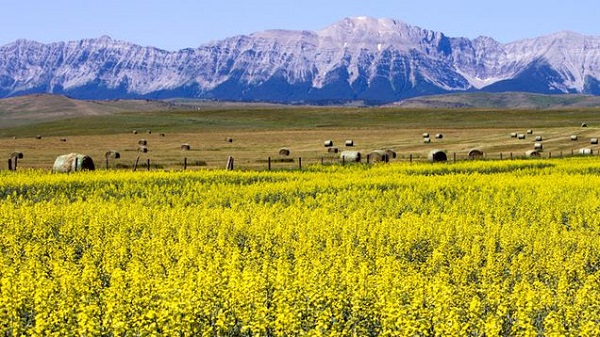Business
Trump’s trade war and what it means for Canada
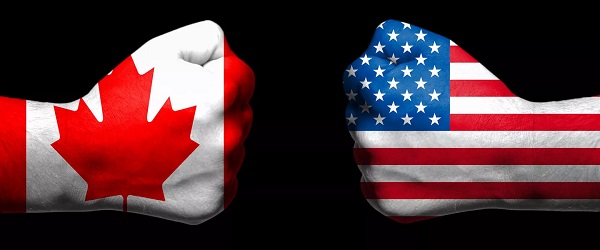
From the Fraser Institute
We didn’t want it but it has crashed onto our shores anyway. U.S. President Donald Trump has unleashed his long-mooted assault on Canada, deploying tariffs as his chosen weapon of “economic coercion.” The Executive Order justifying 25 per cent across-the-board tariffs on southbound Canadian exports (10 per cent on exports of energy and critical minerals) cites American concerns over cross-border drug shipments. Yet that can hardly be the real reason for Trump’s unprecedented action. Canada is at most a tiny part of America’s festering problem of widespread illegal drug use. The notion that these punitive tariffs are mainly about compelling Canada to clamp down on fentanyl production is far-fetched.
It is obvious that this most unconventional of American presidents has other aims in mind. One may be to impose steep tariffs on all or most imports entering his country as a means to raise money for the cash-strapped U.S. treasury. A second may be to suck industrial production and capital out of Canada and other trading partners, to support the MAGA movement’s objective of rebuilding American manufacturing. In his remarks delivered (virtually) to the good and the great assembled at the World Economic Forum’s shindig in Davos in January, President Trump put much emphasis on this latter point. Or perhaps what the new U.S. administration most wants is to convince Canada (and other trading partners) to align with American policies to de-couple from and slow the economic and military ascent of China.
If some or all of these are indeed Mr. Trump’s most important goals, it will be difficult for Canada to negotiate our way out of the bilateral trade war. As hard as it may be to imagine, Trump’s tariffs–with the possibility of even higher levies and various other trade restrictions still to come–could be the new “normal” for Canada, at least for the duration of his presidency. For the moment, the trilateral Canada-U.S.-Mexico trade agreement is either dead or at best barely clinging to life.
As the tariff war gets underway, it is useful to look at the composition of Canada-U.S. trade. Most of it involves cross-border trade in “intermediate inputs,” not finished goods or final products (see the accompanying table). More than three-fifths of Canada’s U.S.-bound exports consist of energy, building materials, agri-food products, other raw materials, and other items used to produce final goods. Similarly, over half of all U.S. goods shipped to Canada are also made up of intermediate inputs. Capital goods (e.g., machinery and equipment) represent 16 to 23 per cent of bilateral merchandise trade. Final goods constitute between a fifth and a quarter of the total. This underscores the highly integrated nature of North American supply chains–and the significant disruptions that two-way tariffs will cause for many industries operating on both sides of the border.
| Composition of Canada-U.S. Merchandise Trade, 2023 (% of total exports) | ||
|---|---|---|
| Canadian exports to the U.S. | U.S. exports to Canada | |
| Final goods | 21% | 25% |
| Capital goods* | 16% | 23% |
| Intermediate inputs | 63% | 52% |
*e.g., machinery and equipment
Source: Canadian Chamber of Commerce, Data Lab.
Looking ahead, it’s clear our economy is about to suffer, as Canadian industries, workers and communities absorb the biggest external shock in a century (apart from during the initial phases of the COVID pandemic). To see why, recall that the U.S. buys more than three-quarters of Canada’s international exports, with the value of our U.S.-destined shipments amounting to about one-fifth of Canada’s GDP.
According to projections published by the Bank of Canada, 25 per cent U.S. tariffs coupled with Canadian retaliatory tariffs will reduce the level of Canadian real GDP by at least 3 per cent over 2025-26–this represents a permanent output loss, meaning it is national income we will never recoup. Business fixed non-residential investment falls by 12 per cent, with exports dropping by nine per cent. Unemployment rises significantly and job creation downshifts. Consumer spending also weakens–in part because retaliatory Canadian tariffs raise the cost of many consumer goods, thus leading to a temporary bump in Canadian inflation. All of these estimates are measured relative to a counterfactual baseline scenario of no U.S. and Canadian tariffs. The U.S. economy will also take a hit from President Trump’s tariffs, notably through higher inflation, increased business uncertainty, and the costs of rejigging the supply chains of American companies that rely significantly on raw materials, other inputs and consumer goods supplied by Canada and Mexico.
How should Canada respond to the American tariffs? An initial priority is to determine if there is a pathway to a negotiated settlement–not a simple task, as the Americans have yet to specify what it would take to make peace. A second option is to hit back. Canada has already announced a schedule for retaliatory tariffs, covering some $155 billion of goods imported from the United States; all of these are slated to be in place by the end of March. While the political impulse and pressure to respond in kind is understandable, retaliation will magnify the economic damage to Canada from the U.S. tariffs. Finding a way to end the conflict–if that is possible–is far superior to a series of tit-for-tat bilateral tariffs.
Some politicians and media commentators have talked up “trade diversification” as an option for Canada. Reduced reliance on the U.S. would likely deliver benefits in the long-term, but it won’t help us in 2025/26. Despite entering into 15 trade agreements with 51 nations (other than the U.S.), Canada has seen virtually no export market diversification in the last two decades. There has been modest diversification on the import side of the trade ledger, mainly due to the growing importance of China and other Asian emerging markets as suppliers of final goods and some intermediate inputs. But the U.S. remains the source of more than half of Canada’s imports of goods and services combined. Moreover, “gravity models” of international trade confirm that Canada’s dense, extensive web of trade and other commercial ties with the United States makes perfect economic sense given the advantages of geographic proximity, a common language, and similar business practices between the two countries.
The Trump administration’s self-chosen trade war is a watershed moment for Canadian foreign and commercial policy. The shock from this U.S. action will persist, even if the tariffs are in place for only a few months. Treating an ally as an enemy is an abnormal practice in the history of Western diplomacy. But with Donald Trump at the helm, the past is no longer a reliable guide to understanding or forecasting American policy.
Business
Energy leaders send this letter urging Prime Minister Mark Carney to unlock Canada’s resources
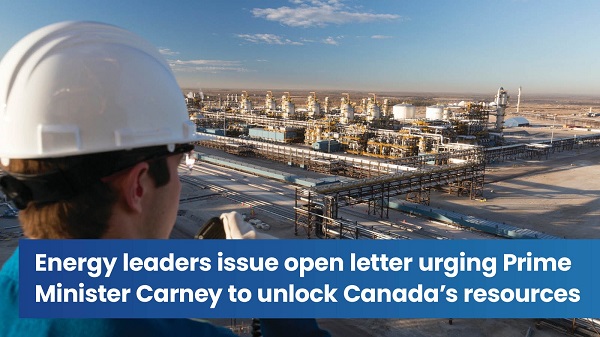
An Open Letter to the Prime Minister of Canada
The CEOs of Canada’s largest energy companies, including Canadian Natural Resources, Cenovus, Suncor, Imperial Oil and many more, have issued a new “Build Canada Now” letter to Prime Minister Carney. They are calling for Ottawa to repeal the production cap, scrap the tanker ban, simplify regulations and shorten project approvals so Alberta’s energy sector can create jobs, attract investment and help Canada become a true global energy superpower.
September 15, 2025
The Rt. Hon. Mark Carney, PC, MP
Prime Minister of Canada
Dear Prime Minister Carney,
Six months have passed since the first “Build Canada Now” letter was sent to you and the leaders of Canada’s other political parties outlining an action plan to unlock Canada’s world class oil and natural gas resources to strengthen Canada’s economic sovereignty, resilience and prosperity. After the election, we followed up with a second letter expressing our support for our shared vision of Canada becoming an energy superpower, one that harnesses both conventional and clean energy resources. Since then, we have seen progress but it is insufficient to stimulate the investment and growth required to make this vision a reality.
Thank you for leading the positive change in tone from the Federal Government in terms of the importance of economic development, including expanded investments in conventional energy. The launch of the new Major Projects Office, Indigenous Advisory Council, the initial list of projects of national significance, and the announcement that it will begin work in support of Pathways Plus are critical steps in the right direction. We appreciate the progress the Federal Government has made in these areas.
However, Canada still lacks the clear, competitive and durable fiscal and regulatory policies required to achieve the so-called “Grand Bargain”. That bargain being significant emissions reductions, expanded market access and material upstream production growth. Achieving these three inter-related outcomes goes beyond progressing select major projects but rather includes a multitude of other projects and related investments. Consequently, we reiterate our call to work together to make the policy changes required for this to happen.
Our call to action is urgent, with persistent indicators that the Canadian economy is moving in the wrong direction. The need to improve productivity and create jobs requires swift and decisive action. Canada is blessed with an enviable abundance of oil and natural gas resources and has the expertise to develop them in a manner consistent with environmental responsibility, social values, and working with Indigenous groups for the benefit of Canada and Canadians. As leaders of this sector, we have consistently advocated for the changes required to unwind the past decade of increasing policy complexity and uncertainty that led to delayed investments, lost opportunities and a competitive disadvantage on the global energy stage.
Given your background, you understand that the private sector and public markets require clarity and certainty to make the long-term investments necessary to realizing this sector’s potential, in turn creating thousands of high-paying jobs and significantly strengthening Canada’s economy.
Making the changes expressed in the earlier Build Canada Now letters are necessary to send clear signals that Canada is open for business. To reiterate, we believe that your government must focus on the following:
- Significantly simplify regulations. The Federal Impact Assessment Act and West Coast tanker ban are impeding development and need to be overhauled and repealed, respectively. Existing processes are complex, unpredictable, subjective, and excessively long. Processes need to be clarified and simplified, and decisions must withstand judicial review.
- Shorten timelines for project approvals. The Federal Government needs to dramatically reduce regulatory timelines to approve all projects within months, not years, of application. This is required to restore investor confidence and once again attract capital to Canada. Clarity on provincial versus federal jurisdiction related to project approvals is also required and needs to be respected.
- Commit to grow production, not limit it. The Federal Government’s unlegislated cap on emissions must be eliminated to allow the sector to grow and achieve its potential for the benefit of Canada and Canadians. The “production cap” creates uncertainty, is redundant, will result in production cuts, and stifles investment.
- Fiscal framework that attracts investment. The Federal carbon levy on large emitters is not globally cost competitive and should be repealed allowing provinces to set regulations. The Federal Government can lead cooperation across jurisdictions, protecting domestic and international competitiveness. Industry needs clear, competitive, and durable fiscal frameworks, including associated with carbon and overall taxation, to secure capital and incentivize investment.
- Incent Indigenous investment opportunities. The Federal Government needs to provide Indigenous loan guarantees at scale so industry can create ownership opportunities to increase prosperity and ensure Indigenous communities benefit from resource development.
As you have clearly stated, our country needs to move from “uncertainty to prosperity”. There needs to be tangible change to make this happen, and without clear and urgent action we risk missing a generational opportunity to capture the potential before Canada now.
As Parliament resumes for the Fall sitting, the energy industry remains committed to working with you, your cabinet, and the provinces on an urgent basis to achieve the energy sector’s potential for the good of Canada. Together, Canada can become the global energy superpower we all envision. We look forward to your response.
Sincerely,
Original signatories

Brandon Anderson
President & CEO
NorthRiver Midstream Inc

Doug Bartole
President & CEO
InPlay Oil Corp.

Robert Broen
President & CEO
Athabasca Oil Corporation

Scott Burrows
President and Chief Executive Officer
Pembina Pipeline Corp.

Chris Carlsen
President & COO
Birchcliff Energy Ltd.

Brad W. Corson
Chairman, President and Chief Executive Officer
Imperial Oil Ltd.

N. Murray Edwards
Executive Chairman
Canadian Natural Resources Limited

Darlene Gates
President and Chief Executive Officer
MEG Energy Corp.

Paul Hawksworth
President and Chief Executive Officer
Inter Pipeline Ltd.

Tyson Huska
President & CEO
Longshore Resources Ltd.

Mike Lawford
President & CEO
NuVista Energy Ltd.

Chris Mazerolle
President
Chevron Canada Resources

Nicholas McKenna
President
ConocoPhillips Canada

Paul Myers
President
Pacific Canbriam Energy Limited

François Poirier
President and Chief Executive Officer
TC Energy Corp.

Susan Riddell Rose
President & CEO
Rubellite Energy Corp.

Don Simmons
President & CEO
Hemisphere Energy Corporation

Adam Waterous
Executive Chairman, Board of Directors
Strathcona Resources Ltd.

Richard Wyman
President
Chance Oil and Gas Limited

Terry Anderson
President and Chief Executive Officer
ARC Resources Ltd.

Michael Binnion
President & CEO
Questerre Energy Corporation

Craig Bryksa
President and Chief Executive Officer
Veren Inc.

David J. Burton
President & CEO
Lycos Energy Inc.

Paul Colborne
President & CEO
Surge Energy Inc.

Greg Ebel
President and Chief Executive Officer
Enbridge Inc.

Grant Fagerheim
President and Chief Executive Officer
Whitecap Resources Inc.

Bryan Gould
Founder & CEO
Aspenleaf Energy Limited

Philip B. Hodge
President & CEO
Pine Cliff Energy Ltd.

Rich Kruger
President and Chief Executive Officer
Suncor Energy Inc.

Byron Lutes
President
Mancal Energy Inc.

Brendan McCracken
President & CEO
Ovintiv Canada ULC

Jon McKenzie
President and Chief Executive Officer
Cenovus Energy Inc.

Curtis Philippon
President & CEO
Gibson Energy

Mike Rose
President and Chief Executive Officer
Tourmaline Oil Corp.

Brian Schmidt
President & CEO
Tamarack Valley Energy Ltd.

David Spyker
President & CEO
Freehold Royalties Ltd.

Bevin Wirzba
President and Chief Executive Officer
South Bow Corp.

Vern Yu
President & Chief Executive Officer
AltaGas
Additional signatories



Business
Attrition doesn’t go far enough, taxpayers need real cuts
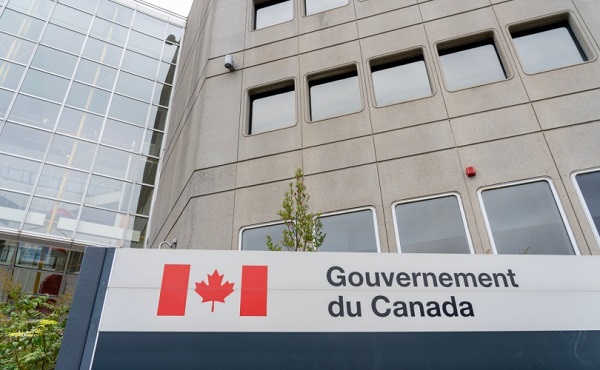
The Canadian Taxpayers Federation is calling on Prime Minister Mark Carney to actively shrink the bureaucracy rather than relying on attrition.
“After adding about 100,000 bureaucrats in a decade, attrition doesn’t go nearly far enough,” said Franco Terrazzano, CTF Federal Director. “Carney needs to get serious about fixing the budget and making government more affordable for taxpayers.
“Carney needs to significantly shrink the bureaucracy immediately.”
Carney recently stated that any reduction of the size of the federal bureaucracy will “happen naturally through attrition.”
The federal bureaucracy cost taxpayers $71.1 billion in 2024-25, according to the Parliamentary Budget Officer. The bureaucracy cost taxpayers $40.2 billion in 2016-17. That means the cost of the federal bureaucracy increased 77 per cent since 2016.
The federal government added 99,000 bureaucrats since 2016.
Carney said he would “balance the operating budget by Budget 2028” during the election. The bureaucracy consumes about 55 per cent of the operating budget.
“Canadians pay too much for an expensive bureaucracy that underdelivers,” Terrazzano said. “Carney needs to get serious about fixing the budget, making government more affordable and shrinking the federal bureaucracy.”
Half of Canadians say federal services have gotten worse since 2016, according to a recent Leger poll commissioned by the CTF. That’s despite the cost of the federal bureaucracy growing 77 per cent. The poll also found that 54 per cent of Canadians want the government to cut the size and cost of the federal bureaucracy.
-

 Alberta6 hours ago
Alberta6 hours agoAlberta first to add citizenship to licenses
-
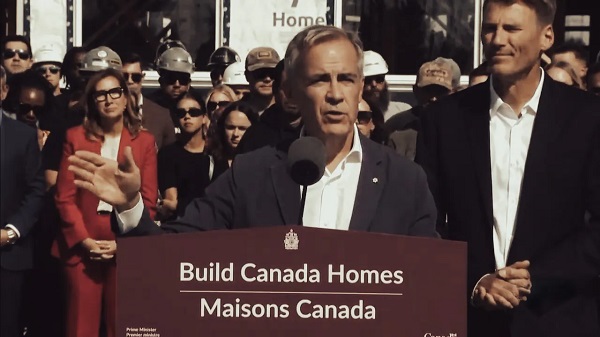
 Business9 hours ago
Business9 hours agoCarney Admits Deficit Will Top $61.9 Billion, Unveils New Housing Bureaucracy
-

 Business8 hours ago
Business8 hours agoCarney’s Ethics Test: Opposition MP’s To Challenge Prime Minister’s Financial Ties to China
-

 Business7 hours ago
Business7 hours agoAttrition doesn’t go far enough, taxpayers need real cuts
-

 Addictions2 days ago
Addictions2 days agoNo, Addicts Shouldn’t Make Drug Policy
-

 Censorship Industrial Complex2 days ago
Censorship Industrial Complex2 days agoThe FCC Should Let Jimmy Kimmel Be
-

 Alberta2 days ago
Alberta2 days agoEducation negotiations update: Minister Horner
-

 COVID-192 days ago
COVID-192 days agoNew Study Obliterates the “Millions Saved” COVID Shot Myth




